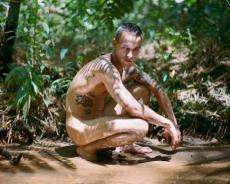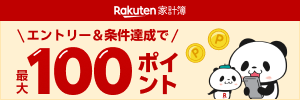「家父長制、人種差別、資本主義、暴力、これらすべての、人々が真実を見るのを妨げているものたち」Interview with GABRIEL GARZÓN-MONTANO about 『Agüita』
NeoL / 2020年12月14日 17時0分
フランス人とコロンビア人の両親をもち、生まれ育ったニューヨークを拠点に活動するシンガー・ソングライター、ガブリエル・ガルソン・モンターノ。レニー・クラヴィッツやジャイルス・ピーターソンにその才能を見出され、楽曲がドレイクにサンプリングされたことも話題を呼んだかれのデビュー・アルバム『Jardín』から3年。ニュー・アルバム『Agüita』では、持ち味であるファンクやネオソウルを下敷きとしながら、レゲトンやラテン・トラップを取り入れることでグローバルなポップ・スタイルにも貪欲なアプローチを見せている。クラシックの素養を備えたマルチ奏者であり、複数のゲスト・プレイヤーを束ねてサウンド全体をオーガナイズするコンポーザーとしての資質。加えて、母の死に捧げた“Moonless”をはじめパーソナルな色合いを深めた楽曲を通じて、かれの多感でセンシュアルな魅力がより強く表現された一枚といえる。いわく「anti-genre」を標榜するガルソン・モンダーノに電話で話を聞いた。(→ in English)
――まずはあなたの音楽的なルーツについて教えてください。どんな音楽やアートにインスパイアされてガブリエル・ガルソン・モンターノというアーティストは生まれたのでしょうか。
ガブリエル「音楽との最初の出会いは母を通して。私は6歳のときにバイオリンを、12歳のときにドラムとギターを始めました。ほぼ同時に、妹と一緒にニューヨークシティオペラ児童合唱団に参加したんです。12歳から作曲を始めましたが、とてもおもしろい曲を作っていましたね(笑)。15歳の時には一人前の曲を書いていました。その後はスローペースで、 19歳でより多くの曲を書き、20歳で最初のEPを作りました。それから25歳で、もっとたくさんのレコードをリリースしました。とにかく、母を通して音楽に夢中になったんです。誰かから学んだり、アレンジのために他の人と作業することもありましたが、自分で書き、自分で演奏していました。ですから、それは私が何に夢中になっていて、何ができるかを自然に反映しているだけなんだと思います」
――具体的にどんな音楽を聴いて育ちましたか。いまの自分に影響を与えたアーティストを教えてください。
ガブリエル「多様なジャンルです。最初に買ったCDはビートルズでした。次に、レッド・ホット・チリ・ペッパーズ。 まるで90年代後半のようですよね。それからシュガー・レイを聴き始めたんです。シュガー・レイを覚えていますか? その後はニルヴァーナとジミ・ヘンドリックスのようなロック・ミュージックにより興味を持ちました。それからヒップホップ、プリンス、そしてファンク・ミュージック。その後、私はクンビア(南米コロンビアのマグダレナ川下流域からカリブ海沿岸地方に伝統的に伝わるリズムと舞曲)に夢中になりました」
――母親がフランス人、父親がコロンビア人で、またお母様はプロの音楽家でもあったということで、幼い頃から様々なカルチャーやアートが身の回りに溢れたなかで過ごされてきたのではないかと想像します。そうした生まれ育った環境はあなたのクリエイティヴな側面、あるいは美意識にどのような影響を与えましたか。
ガブリエル「日常的に音楽を作るのが常でした。そのことで音をよく聴ける非常に良い耳を培うことができたと思いますし、作曲家としての自分のイマジネーションがたくましくなりました。なにしろ、作曲する時に曲のフル・アレンジメントを想像することができるのですから」
――自身の作品では、ドラム、ベース、ギター、シンセサイザー、パーカッションなど多くの楽器をひとりで演奏されていますが、これらの楽器は全て独学でマスターしたのでしょうか。ニューヨーク州立大学パーチェス校(※ミツキも卒業生)に通われていたそうですが、これまで受けた音楽教育について教えてください。
ガブリエル「作詞作曲のプログラムのことを知らなかったので、大学で音楽を勉強できるように、高校の終わり頃からクラシック・ギターを学び始めました。ジャズの演奏しか知らなかったんです。とにかく、クラシック・ギターを少し勉強したのですが、メジャーな音楽院であるマンハッタン音楽学校に出願していたので途中でギターはやめることになりました。『まあ、入学は無理だろうな』と思っていたんです(笑)。しかし、私はピアノとベースを独学で習得し、ポイントを掴むコツをくれた友人たちもいてくれました。例えば、友人の一人であるデヴィッド・カトラーは、手をベースの上で平らに保つようにと教えてくれました。私の周りには素晴らしい人たちがいて、そういう人たちのことを考えると平静を保てます。自分が演奏するたびに、教えてくれた人のことを思い浮かべるんです。普段は家で楽器の弾き方を勉強していました。たまに学校にも行きましたが、特別な音楽学校ではありません。高校にはいくつかの音楽教室がありますよね? 私は学校でアンサンブルし、次にいくつかのドラムレッスンをやっていました」
――お母様はフィリップ・グラスのアンサンブルのメンバーだったと伺いました。ガブリエル・ガルソン・モンターノの音楽においてもクラシックやアバンギャルド・ミュージックは大きな要素であり、またあなた自身もマルチ・プレイヤーでありますが、音楽に関しては彼女からはどんなことを学びましたか。
ガブリエル「妊娠していたとき、母はリハーサルしたり歌をっていたので、お腹の中の私はをたくさん振動を感じていたんじゃないでしょうか。彼女は私が6歳のときに楽器を選ぶように教えてくれました。音楽とより自然に触れ合うようにね。母は2006年に亡くなりましたが、いまだ共にいます。本当に音楽の全てを彼女から得たと思います。私は独学で楽器の演奏方法を習得しましたが、それは親近感がベースにあったからなのです」
――あなたがプロのミュージシャンとしてデビューするにあたっては、〈Stones Throw Records〉との契約の橋渡し役となったメイヤー・ホーソーンの存在が大きかったと聞きます。ホーソーンは日本のミュージシャンの坂本慎太郎とコラボレーションするなど、日本の音楽ファンにも馴染みが深いのですが、かれとのエピソードで印象に残っているものがあれば教えてください。
ガブリエル「では、どんな面白いことがあったか振り返ってみましょう。ある時、彼は1960年代の小さなメルセデスベンツで私を迎えに来ました。ハットとショート丈のスボン、眼鏡という紳士のような出立ちでね。そして私を彼のおおよそ2万枚のレコードコレクションを収めている地下室に連れて行ったんです。彼はその全てを流してくれたので私は有頂天になりましたよ。 J・ディラのすべてのサンプルなどね。彼はただ座って音楽を流してくれ、とても楽しい時間でした。決して忘れられない思い出です」
――ホーソーンとはよく会うんですか。
ガブリエル「どちらもニューヨークにいて、食べることが大好きなので、よく一緒にディナーに行きますよ」
――すごい! では、改めて最新アルバムの『Agüita』について話を聞かせてください。『Agüita』は前作の『Jardín』に増して楽曲ごとにスタイルが多彩で、何よりも音楽を制作すること、歌うことそのものをあなたが楽しんでいる様子が感じられて感動的でした。今作の音楽的なコンセプトやアイデアのもとになったものがあれば聞かせてください。
ガブリエル「理想はサウンドトラックを作ることでした。まるで別のアーティストがいるような、とても一人では作ったとは思えないレコードにすること」
――サウンド的にはどうでしょう? 今回のアルバムで表現したかったサウンドはありましたか。
ガブリエル「自分のことを反映している音楽。そのため、アルバムにはトラップとレゲトンが含まれています。前作とは違うものにしたかった。一部のジャンルの音楽にはいくつかのルールがあることは知っていますが、私には独自のルールがあり、別の考え方で音楽を作ってみました。真逆のことをするのが好きなんです。なぜなら、それが現実であり、人々のあり方だと思うから」
――今作についてあなたは「anti-genre」と語っているそうですが、例えば“Muñeca”や “Mira My Look”で聴くことができるレゲトンやラテン・トラップのスタイルは今作ならでは特徴の一つだと思います。また“Agüita”はラッパーのティエラ・ワックにインスパイアされた曲だそうですが、他にも今回の制作にあたってインスパイアされたり良い刺激をもらったものがあれば教えてください。
ガブリエル「とても多くのアーティストに刺激を得ています。しかし、大きなインスピレーションはビョーク、バッド・バーニー、プリンスだと思います。私はいまだ彼らの音楽を聴いています。彼らに制限はありません。非常に多くの可能性を持っており、多様な音を出すことができます。私も一つのことに固執するのは好きではありません。特定のフォームを持たないアーティストが好きです。人間には制限がなくもっと可能性があるのではないでしょうか」
――新たな試みとして取り組んだことはありましたか。
ガブリエル「ええ、果敢にね。今回はスタジオにあったものの中から、ウッド、メタル、ベースギター、キーボードなど、面白い音をうまく選びました。初めて木管楽器を使いました。トロンボーンとアルトサックスを用いたけれど、クラリネットやオーボエを忘れてしまいました(笑)。しかしそれを拡張させ、よりシネマティクでオーケストラ的なサウンドにしました」
――いま伺ったように、今作は前作と比べてより多くの種類の楽器が使われていて、またレコーディングに参加しているプレイヤーも多岐にわたっています。楽器のチョイスも含めて、今作の作曲についてどのように行われたのか興味があります。
ガブリエル「自分のアウトプットを制限することにうんざりしたんです。もっとたくさんの方法があることを人々に見せたかった。音楽にはリミットはない。音のアイデアを持ち寄り、歌詞は後にのせました」
――今作のリリック、バックグラウンドにあるストーリーについても教えてください。叙情的でスピリチュアルなイメージが広がる歌の世界の中にも、今作は死や喪失感、あるいは物事の変化を前にして湧き上がる怖れ、疑問といった感情が色濃く投影されている印象を受けました。
ガブリエル「“Thombs”は社会に対する批判。“With A Smile”は、個人的に体験した、依存や中毒のような逃れられない何かとの関係について。“Meneca”はただ人間について、良い音楽を聴き、良い音楽を作ることについてです。“Field”は戦場についてです。任意の数の当事者によって要求された任意のスペース。これはあなたの頭の中や、またはもっと大きなところにある可能性があります。自分の立場を考えてみるようなものです。意義のあることは簡単にはいきません。根を下ろすためにしっかりと立ち向かわなければならず、他の人が同じことをしなくても気にせず、自分を他人と比較しないでください。あなたが行こうとしている場所にあなたを連れて行くつもりはないような悲しいアジェンダに従わないでください。歌詞のモチーフはその全てのことの真ん中にあります」
ーー“Tombs”では「なぜ目に見えないものについて話し合うのですか? なぜゴージャスな夢から目覚めるのですか?」というフレーズが印象的です。この曲であなたが対峙している問題とはなんなのでしょうか。
ガブリエル「家父長制、人種差別、資本主義、暴力、これらすべてのもの。人々が真実を見るのを妨げているものたちです。公的および私的にね」
――ガンで亡くなられたお母様のことを歌った“Moonless”は、今作の楽曲の中でも最もパーソナルな曲だと思います。この曲を今作に収録することは、あなたにとってどんな意義があったと言えますか。
ガブリエル「母についての曲を書けたのは喜ばしいことです。ずっと心に留めていた、自分の体験をついに表現することができて幸せです。もっとはやく書けたかもしれないけど、今のようには感じられなかったはず」
――「目が覚めたら、何が聞きたいのか/何が私を踊らせ、勝利の祝祭を与えてくれるのか」と歌う“Agüita”は、MVも強烈な印象を残します。ジャングルで白馬にまたがるシーン、トラクターのホイールでタトゥーを入れるシーン、クライマックスでダンスクルーと踊る場面など、性的なメタファーも忍ばせたイメージのシークエンスが刺激的ですが、この撮影が行われた時のエピソードを伺えますか。
ガブリエル「プランに5ヶ月かかりました。私はペレイラに2年間戻っておらず、友達と遊んでもいなければパーティもしていなかった。だからコロンビアに着いた頃には、みんなに会いたいという気持ちそれだけでした。みんながバイクや自転車を持っているので、すべてのトリックが可能でしたし、長い伝統の表現でもあります。そのために私たちはそこに行き、本当に楽しい日々を過ごしました。私たちはバンを持っていき、ドアを開けるとみんながバイクに乗って登場する。私がメイクアップしてローブを着て現れると、200人もの人々が周りに出現するんです。彼らは私の周りでサークルを作り始める――それをMVで観ることができますよ。本当に楽しかった」

――現在はCOVID-19の影響でさまざまな音楽活動も制限される状況にあります。ニューヨークはロックダウンが続いている状況だと聞きますが、現在はどのようにして制作活動、演奏活動などを行なっていますか。
ガブリエル「ツアーの予定でしたが、キャンセルしなければなりませんでした。けれども数日前には小さなオンラインのコンサートを行い、そのためのリハーサルを行っていました。できることは常にあります。ダンスクルーと一緒に仕事をするのは本当に楽しかったです。信じられないほど素晴らしい撮影でした。街の真ん中には、凄まじいエネルギーがあるんです。山も見えますよ」
――先日、SNSにあなたがアップしたBlack Lives Matter運動に関するメッセージを拝見しました。そして現在(※インタヴューが行われたのは10月末)、アメリカは大統領選が目前に迫っています。COVID-19の感染拡大も含め先行きの見えない状況が続いていますが、『Agüita』を聴く人へのメッセージをお願いします。また、今後の活動やチャレンジしたいことなどがあれば。
ガブリエル「さらに(自分以外の)キャラクターを加えていきたい。そして、2人のキャラクターでデュエットをしたい。MVでは2人は一緒に表れます。そして次のアルバムでは、3人すべてを一緒に曲で表現し、より多ジャンルの曲を作りたいと思います。テーマは同じで、世界の繋がりは拒絶できないということ。繋がりを保持し、すべてがコネクトされていることを実感します。より国際的にコラボレーションするアーティストのように。誰もが他の文化を見つけ続け、それをコピーします。それはとても美しい。お互いをとても尊敬しているということですから。みんなへのメッセージは、ル・ポールによる『私たちは誰もが裸で生まれ、あとは全員ドラァグである』です」
text Junnosuke Amai
edit Ryoko Kuwahara

GABRIEL GARZÓN-MONTANO(ガブリエル・ガルソン・モンターノ)
『AGÜITA(アグイータ)』
(Big Nothing / Ultra Vybe)
■収録曲目:
1. Tombs 2. With A Smile 3. Muñeca 4. Fields 5. Mira My Look 6. Moonless 7. Someone 8. Bloom 9. Agüita 10. Blue Dot (with Theo Bleckmann
Gabriel Garzón-Montano
Gabriel Garzón-Montanoはニューヨークをベースに活動するシンガーソングライター/マルチインストゥルメンタリストだ。2014年にEP『Bishouné: Alma Del Huila』をリリース。Lenny Kravitzのヨーロッパ・ツアーのオープニングに抜擢され、Drakeの曲「Jungle」(ミックステープ『If You’re Reading This, It’s Too Late』収録)で自身の曲「68」がサンプリングされる等、大きな注目を浴びる。2017年にはデビュー・アルバム『Jardín』をStones Throwよりリリース。高い評価を獲得した。
http://bignothing.net/jagjaguwar.html

- Hello Gabriel. I still remember your show in Japan three years ago. That show left me such a big impact, so I have been really looking forward to interviewing you this time. The newest album “Aguita” amazed me so much as well but this is our first interview with you so please let me start with some basic questions. I’d like to ask you about musical roots first. How did you get into music? Which artist inspired you as an artist?
Gabriel : My first contact to music was through my mother, I played the violin when I was 6 years old. And I started to play drums and guitar when I was 12. Then around the same time I joined New York City opera children’s choir with my sister. I also started writing songs when I was 12, but they were very hilarious ones (laughs). Then when I was 15, I started writing songs like adults. After that it was pretty slow. At age 19 started writing more then made the first EP when I was 20. Then 25, I put out more records. So anyways, I got into music through my mother. I sometimes learnt from someone or worked with some other people for arrangements , but most of the music I wrote played by myself. So I think it’s just the natural reflection of what I’m into and what I’m capable of.
- What kind of music have you been listening to since you were younger? Any artist who inspired you to be an artist?
Gabriel : Lots of kinds of music. The first CD I bought was the Beatles. Then Red Hot Chili Peppers. It was like late 90’s. Then started to listening to Sugar Ray. Remember Sugar Ray? After that I got more into Nirvana and more rock music, like Jimmy Hendrix. Then hip hop, prince, and then funk music. After that, I got into Cumbia.
- I heard your mother is French, your father is Colombian, and also your mother was a professional musician. I bet you grew up surrounded by lots of types of cultures and art. Do you think that environment has been affecting on your creativity, aesthetic or philosophy in any way?
Gabriel : I think it normalized making music like as a daily activity. And I also think it gave me very good ears for sound. It helps my imagination as a composer. I can imagine the full arrangement of the song when I write music.
- You play many instruments such as the drum, bass, guitar, synthesizer, percussion. Did you teach yourself how to play all those instruments? I also heard you went to SUNY Purchase. Please tell us about the history of your musical education.
Gabriel : I started learning classical guitar towards the end of high school so that I could study music in university because I wasn’t aware of songwriting programs. I only knew about Jazz performance, right? Anyways, so I studied a little bit of classical guitar, and then I had to quit because I was applying to Manhattan School of Music, which is a major conservatory. And I was like, “Well, I’m not gonna be able to get in “ haha. But I self taught piano, and self taught bass. And I had some friends that gave me pointers. One of my friends David Cutler, he told me to keep my hand flat on the base. There’s just moments where people say like if you don’t do this, it’s going to be very difficult. I’ve aways had good people around me and like I always think of him whenever I keep my had flat, you know. Sometimes people say things and every time you do the thing that makes you think of what the person taught you. I normally studied how to play instruments at home. And some at school but not like special music school. High school normally have some music classes. Right? Normally I would ensemble at school and then some drum lessons.
- Your mother was a member of Phillip Glass ensemble, wasn’t she? Classical music and Avant-garde music are big element for your music, and you’re a multi instrumentalist yourself as well. What did you learn you from her you think?
Gabriel : When she was pregnant with me she was doing rehearsals and singing and so I think she was putting me in vibrations a lot. And she taught me to pick an instrument when I was 6 years old. She thinks she just made me feel more natural with music. My mother passed away in 2006 but she’s still here with me. I got really everything music from her. I taught how to play instruments myself a lot but just that foundational feeling of familiarity.
- Mayer Hawthorne played a big role for your debut as a professional musician as he is the one who built a bridge between you and Stones Throw Records. Lots of Japanese fans are familiar with him because he’s been doing something special for Japan such as creating a split single with a Japanese musician Shintaro Sakamoto. Can you share some stories with us about you and him?
Gabriel : Let’s see what was interesting. There as one time he picked me up in a small Mercedes Benz from the 1960’s. He was dressing like a gentleman like wearing hats and shorts and glasses. And he took me to the basement where he’s got all of his records. It’s the collection of his records and maybe was like 20,000 records He got me really high, and played me all those records. All samples of J Dilla. I’ll never forget that because he just sit down and just let the music wash over me. It was a lot of fun.
- Do you guys hang out a lot?
Gabriel : Whenever we both are in New York. We love to eat. So we always go to good diners.
-Wooo That’s amazing! Now let me ask you about your new album “Aguita”. “Aguita” is even more diverse than the previous album “Jardin”, and it feels you’re enjoying making music and singing yourself. What was the musical blueprint of this album?
Gabriel : The ideal was to make a soundtrack. As if it’s where separate artists. The record you can’t believe that the album was made by one person.
- What about the sound? what type of sound did you want to make this time?
Gabriel : The music which is reflecting what I’m into myself. So the album includes some trap and reggaeton. I wanted to something different from last time. I know some genre of music have some rules but I had my own rules. I tried to make music with another mindset. I like doing things completely opposite because I think that’s what reality is and that’s how people are.
- I heard that you’re describing the new album “anti-genre”. You just mentioned those genres but reggaeton or Latin trap which we can hear on ‘Muñeca’ and ’Mira My Look’ can be the new elements compared to the last album I think. I heard that Tierra Whack is one of the inspirations of “Aguita”, but what else did you get the inspirations from? Did you try anything new this time?
Gabriel : So many artists. But I’d say the big inspirations are Bjork, Bad Bunny, and Prince. I still listen to their music. They have no limit. They have so many potentials and can make lots of kinds of sound. I don’t like getting stuck in one thing too. I like artists who don’t have any specific form. I don’t think people are so limited.
- Did you try anything new this time?
Gabriel : Yeah totally. I think I was better at choosing interesting sound out of what I had in the studio this time, like pieces of wood or metal, bass guitar, keyboards. And I used woodwind for the first time. So we had a trombone, and alto saxophone. And clarinet or oboe I forgot, haha. But yeah, I extended it. That is why the sound is more cinematic and orchestral this time.
- This time, you’re using even more types of instruments, and also hiring many more musicians for the recording. How did you choose those instruments and make songs?
Gabriel : I was tired of constricting my output. I was making way more to show people. I thought the music shouldn’t be so limited. I came yo with the ideas of sound, then put the words on it later.
- Tell us about the lyrics and the stories behind. It’s very lyrical and spiritual, but at the same time, you’re talking about death, loss, fear, questions. What’s the motif of the lyrics? What was the inspirations?
Gabriel : ‘Tombs’ is a critique of society. ‘With A Smile’ is like a personal experience of a relationship with something you can’t get away with any sort of addiction. And ‘Meneca’ is just about being a man, and listening to good music and making good music. ‘Fields’ is about battlefield. Any space that has been claimed by any number of parties. This can be in your head or at large. It’s like, think of your position. Nothing worthwhile is easy. You have to get to stand firmly for that thing you got to take a root position and you can’t mind how other people don’t do the same things. Don’t compare yourself to other people. Don’t go by sad agenda. That’s not going to take you to the place you’re trying to go. The motif of the lyrics is in the middle of all this.
- The phrase “Why discuss what we can’t see? Why awaken from a gorgeous dream?” On ‘Tombs’ left me a big impact. What issues are you talking about on this track?
Gabriel : Patriarchy, racism, capitalism, violence, all these things. “Why discuss what we can’t see? Why awaken from a gorgeous dream?” Is just kind of whatever is preventing people from seeing the truth. Publicly and privately.
- You’re singing about your mother who passed away by cancer on the track ‘Moonless’. I think that tack can be the most personal track on the album. How important was it for you to put the song on the new album?
Gabriel : I was just grateful that I could write a song about her. It was moving in the way. I was happy to be able to finally describe that experience. I could’ve have written a song about her earlier but I couldn’t feel that way.
- In ‘Aguita’, you’re singing “ When I wake up, what do I want to hear, what makes me dance and gives me the feeling of victorious celebration?”. The music video of the track draws everyone’s attentions with some eye-catching scenes such as riding on a white horse in jungle, getting tattoos with tractor wheel, and dancing with the dance crew at the climax. Some scenes are provocative and sexual as well. Do you have any interesting episodes from behind the scene?
Gabriel : I think it took 5 months to plan it. Basically, I haven’t been to Pereira for 2 years and haven’t been hanging out or partying with my friends. So by the time I got to Columbia, I just wanted to see everybody. Everyone has motorcycles and bicycles and so all the tricks, and that’s a huge tradition. So we’ve been out there, and that was a really fun day. We came with the van, opened the doors and everyone got out with gears, and I’ve got some make-up and robe on. Then 200 people showed up around us. Then they started doing circles around me. You can see that in the video. That was so much fun.

- Because of cover-19 musicians can’r really do much stuff and I heard the lock down is still happening in New York. How are you creating music or doing your musical activities?
Gabriel : We had tour but we had to cancel. But we did tiny desk concert a couple days ago and we have been rehearsaling for that. There’s always something we can do. I really enjoyed working with the dance crew. That was an incredible shoot. The energy was amazing being in the middle of the city. You can see the mountain, too.
- I saw the message you posted on social network in June about Black Lives Matter moment. And now the election is happening in the sates, and we don’t even know what would happen next including the spread of cover-19. Can you give the listeners of “Aguita” a message? If there’s anything you want to try or challenge from now on, what is it?
Gabriel : I want to add more characters. And I want to do a duet between two of the characters. In the music video, they appear together. And the next album, I can have all three in the songs together. And make more genre of songs. People don’t understand the project on the same term but they still refuse to except the world. We still hold on to that and see it all gets connected. Like artists collaborates more internationally. Everybody keeps just finding other cultures and copies that. That is beautiful. So much respect for one another. The message to everyone is “We’re all born naked, the rest is drag” by RuPaul.
text Junnosuke Amai
edit Ryoko Kuwahara
関連記事のまとめはこちら
https://www.neol.jp/music-2/
外部リンク
- ブリアル、フォー・テット、トム・ヨークによるコラボレーション・シングル
- 「家父長制、人種差別、資本主義、暴力、これらすべての、人々が真実を見るのを妨げているものたち」Interview with GABRIEL GARZÓN-MONTANO about 『Agüita』
- ク・へジンがノサッジ・シング(Nosaj Thing)とコラボレーションした新曲「CLOUDS」をリリース
- naomi paris tokyoによる楽曲が添えられたArt Book。Yuuki Ikegami 『Lost My Mind』
- 「大きくなることによって無くなる魅力もある」藤原ヒロシ『slumbers2』インタビュー
この記事に関連するニュース
-
旅行者はGoogleを活用し続けつつ、AI生成のソーシャルメディアコンテンツにも肯定的
PR TIMES / 2025年1月14日 10時45分
-
tHE GALLERY HARAJUKUにて、2025年1月2日(木)より、THEKLA KAISCHAURI個展「FRACTURED」を開催。
PR TIMES / 2024年12月25日 14時45分
-
UESHIMA MUSEUM ANNEX オープンのお知らせ ~ 2025年1月15日より、今津景展を開催
PR TIMES / 2024年12月23日 15時15分
-
スリーシェイク所属の早川大貴がクラウドネイティブ技術を推進するCNCF Ambassadorsに就任
PR TIMES / 2024年12月23日 10時45分
-
この英語ってどんな意味?「apple of my eye」
OTONA SALONE / 2024年12月22日 7時0分
ランキング
-
1天正遣欧使節・千々石ミゲルの墓、長崎県諫早市の文化財に…ミカン畑での墓石発見から20年
読売新聞 / 2025年1月15日 17時0分
-
2高齢者は「体重」が重要…標準を下回ると死亡リスクが急上昇
日刊ゲンダイDIGITAL / 2025年1月15日 9時26分
-
3芸能人なぜ呼び捨て?「日本語呼び方ルール」の謎 日鉄会長の「バイデン呼び」は実際に失礼なのか
東洋経済オンライン / 2025年1月15日 9時20分
-
4スニーカーのインソールを変えるだけで「靴の機能は劇的にアップ」する。“初心者が買うべき”一足とは
日刊SPA! / 2025年1月15日 15時51分
-
5「室内寒暖差がつらい…」その要因と対策が明らかに! - 三菱電機が紹介
マイナビニュース / 2025年1月14日 16時10分
記事ミッション中・・・
記事にリアクションする
![]()
記事ミッション中・・・
記事にリアクションする

エラーが発生しました
ページを再読み込みして
ください










